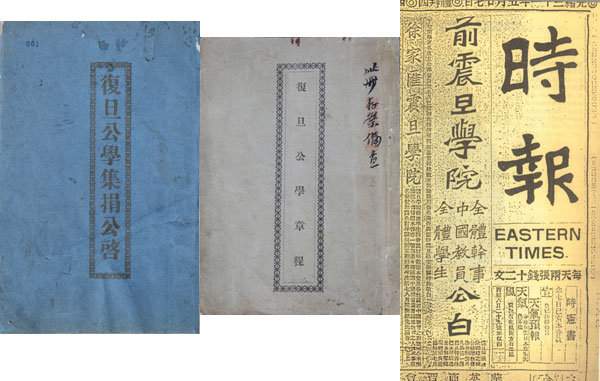
In 1902, Ma Xiangbo(马相伯), a Chinese Jesuit priest, scholar and educator, spent all his fortune and established Zhendan Academy (later Aurora University) in the empty buildings of Xujiahui Catholic Observatory. In 1905, the imperialist forces in the Xujiahui Catholic Church plotted to seize the leadership of the academy, forcing Ma to leave for recuperation. In order to protestagainst the interference of the church, about 130 students led by Yu Youren and Shao Lizi left the academy, giving their support to Ma for rebuilding the institution in Wusong. On September 14th the same year, or August 16th based on lunar calendar, Fudan Public School, the first higher education institution run by Chinese people, opened at the government office of Wusong area, Shanghai.
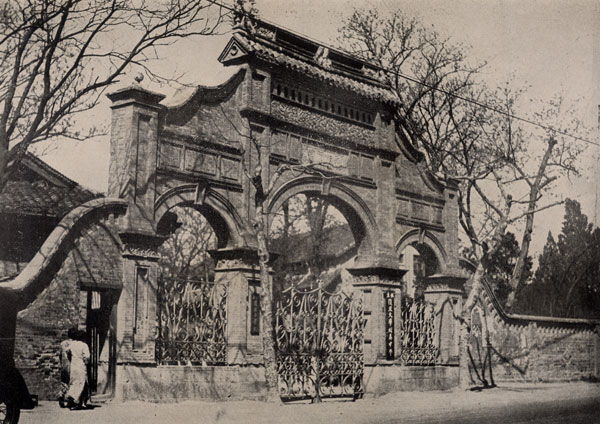
During the Revolution of 1911(辛亥革命)—the revolution that overthrew the Qing dynasty and established the Republic of China—Fudan Public School was suspended and the school buildings were used as the headquarters of the Korean Liberation Army, an important ally fighting alongside China in the war. After the establishment of the Republic of China, Yu Youren, appointed as the deputy head of transportation, joined a group of 41 alumni and wrote to the interim central government in the national capital of Nanjing, asking for the resumption of the school. With the full support of Sun Yat-sen, Fudan Public School became the only university formally approved by the interim government which also granted 10,000 silver dollars to the school to help its restoration. Later from 1912 to 1922, Fudan Public School returned to Xujiahui and settled in the Shrine of Li Hongzhang.
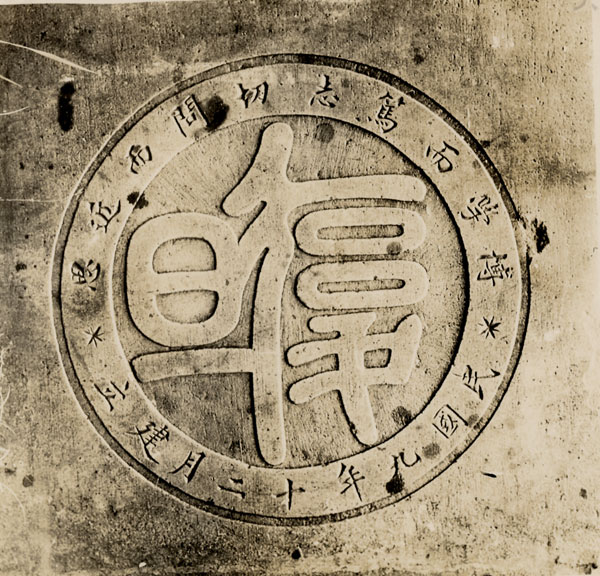
In 1918, Li Denghui, the then president of Private Fudan University, bought over 70 mu(approx. 4.67 hectares) of land in Jiangwan with 150,000 silver dollars he raised during his lobby trip to Southeastern Asian countries. In the winter of 1920, Fudan finally had its own classrooms and facilities in Jiangwan which has remained a site of the university up to this day. In 1929, Fudan set up four faculties including Arts, Sciences, Law and Business under the University Organization Law (《大学组织法》) issued by the Ministry of Eduation of the Republic of China. Thanks to an improved academic structure, the development of Private Fudan University now entered a golden era.
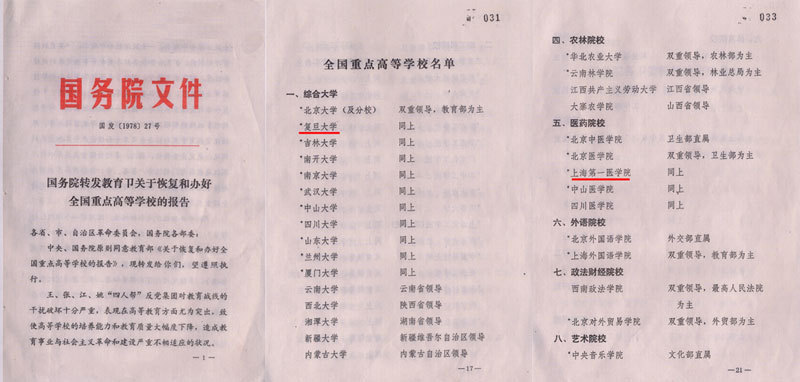
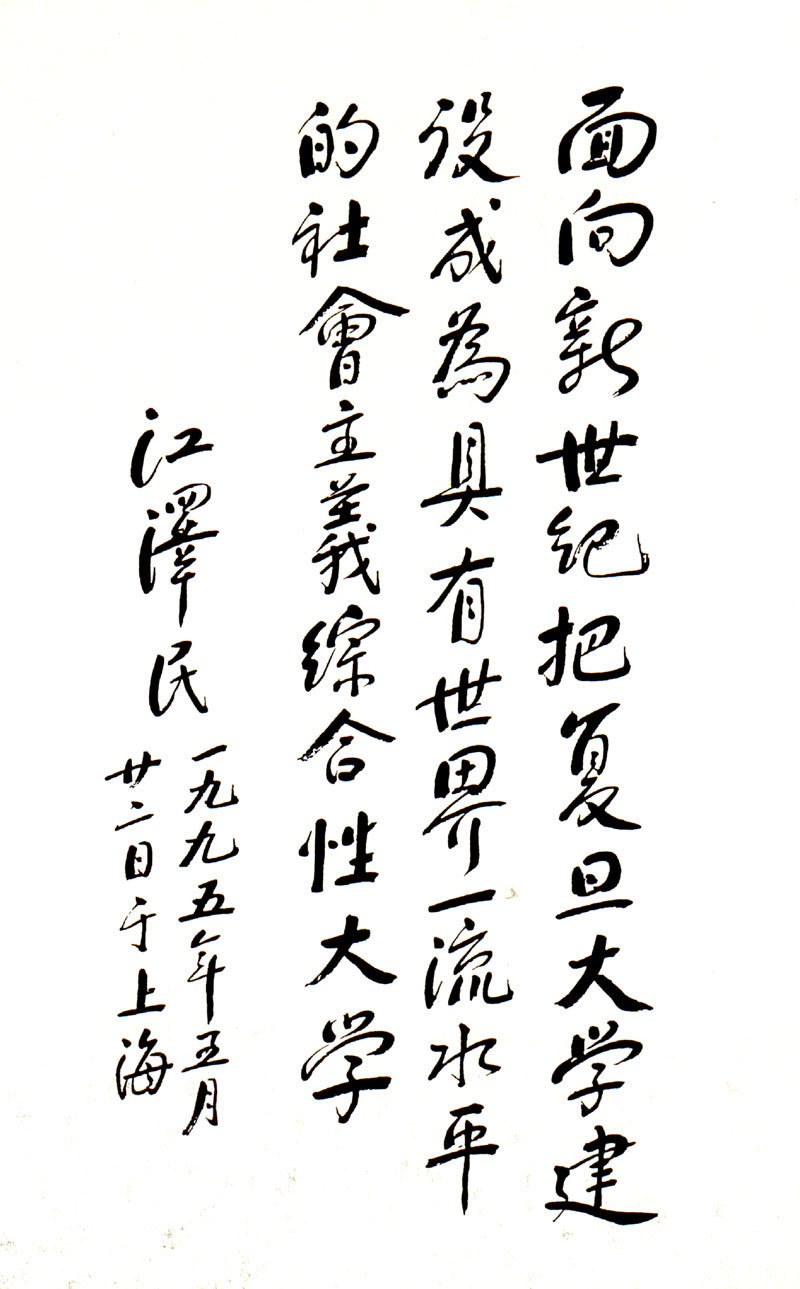
After the outbreak of the war of resistance against Japanese aggression, teachers and students were forced to migrate to Beibei area in Chongqing and build by the Jialing river bank a wartime campus composed of over 20 academic departments across the five faculties: Arts, Sciences, Law, Business and Agriculture. A small number of teachers and students stayed back in Shanghai and formed the Shanghai Tutoring Department, adhering to the Three Don’ts Principle, namely don’t report to, accept funding or be interfered by enemies, to maintain their national dignity. In 1942, Fudan University was nationalized and resources available for running the university were greatly improved. Prominent teachers gathered here and offered their wisdom to the university, making Xiaba where Fudan was located an intellectual-brimmed town. In 1946, after the victory of the war, Fudan left Chongqing and returned to Jiangwan, Shanghai.
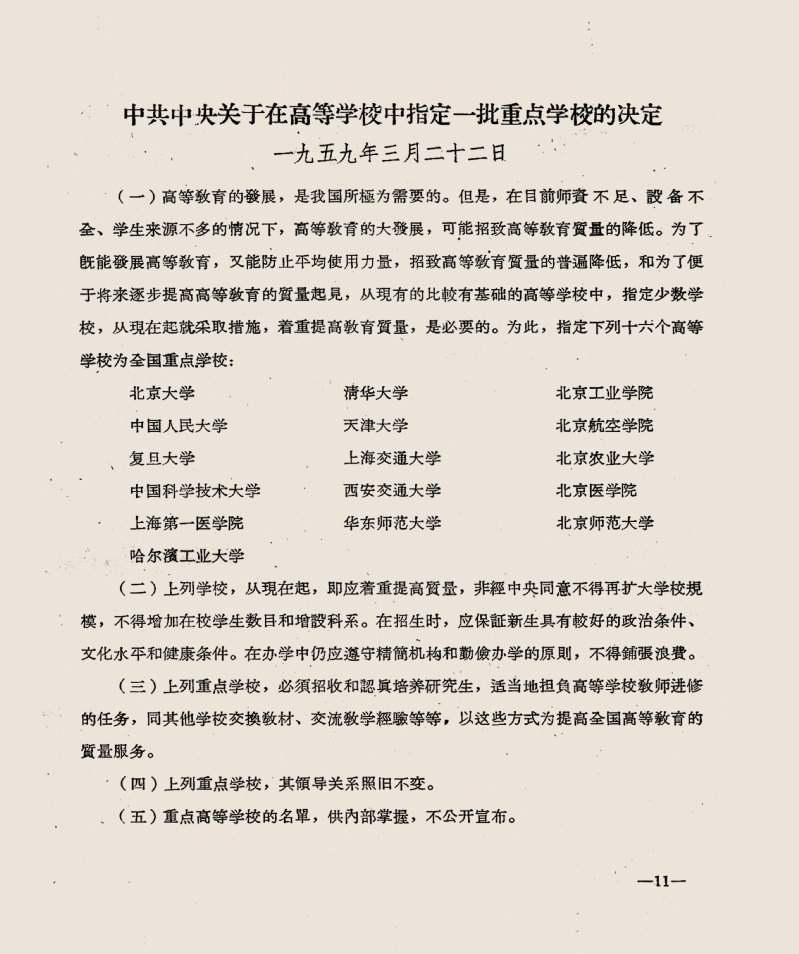
The year 1949 witnessed the liberation of Shanghai, the establishment of the People’s Republic of China, and a new leaf turned in the history of Fudan. The 1952 State Reform of Higher Education Institutions laid the groundwork for Fudan University to become a prominent comprehensive university with a focus in Arts and Sciences. In May 1959, Fudan University was acknowledged by the state as one of the 16 national key universities: the first major take-off in the history of the university.
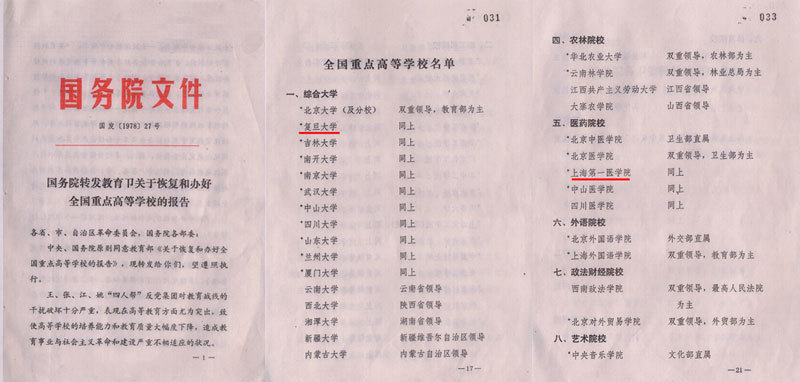
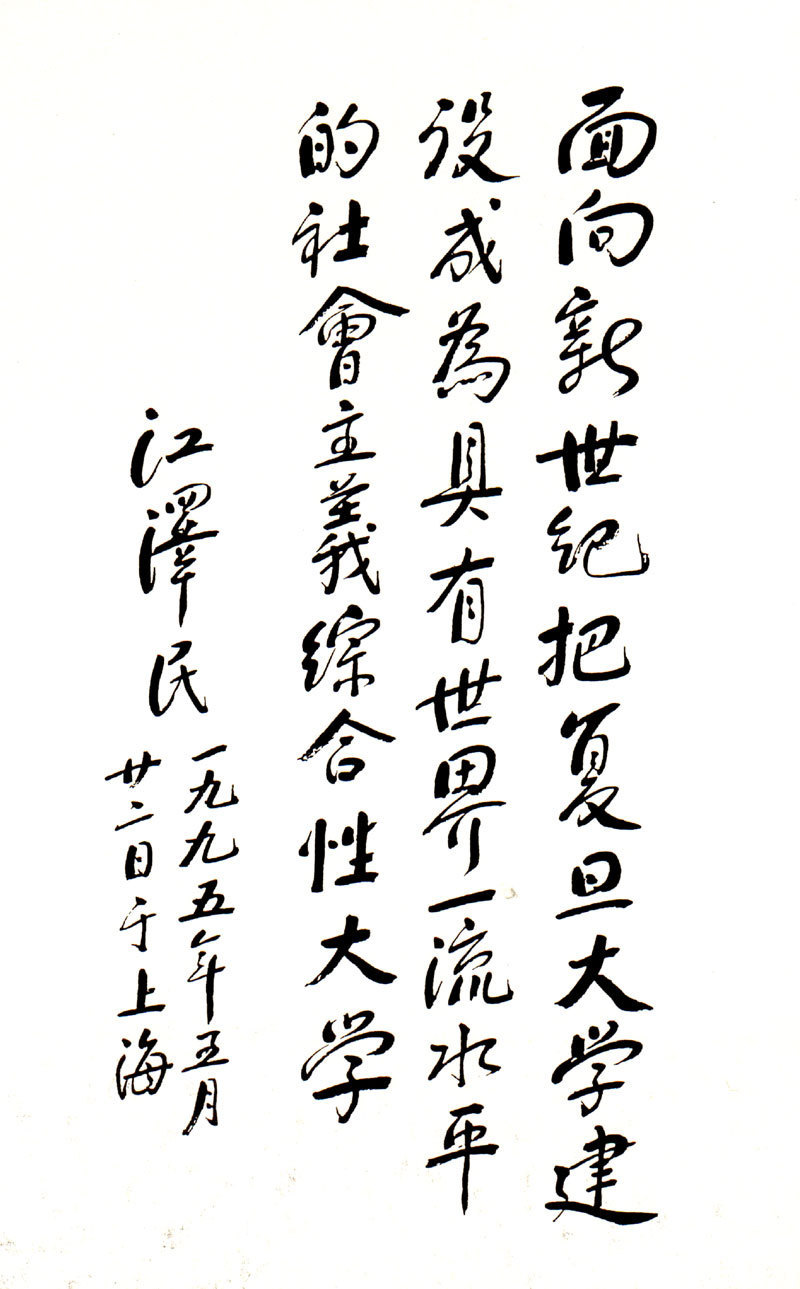
In February 1978, the State Council approved the Report on the Resumption and Betterment of National Key Higher Education Institutions(《关于恢复和办好全国重点高等学校的报告》)submitted by the Ministry of Education and Fudan was reaffirmed as a national higher education institution. In April 1984, Fudan University was listed a state-prioritized institution for development in the 7th Five-Year period. Gaining influence as a national key comprehensive university in just a few years, Fudan was selected into Project 211, a project to raise research standards of higher education institutions: the second major take-off in the history of the university.